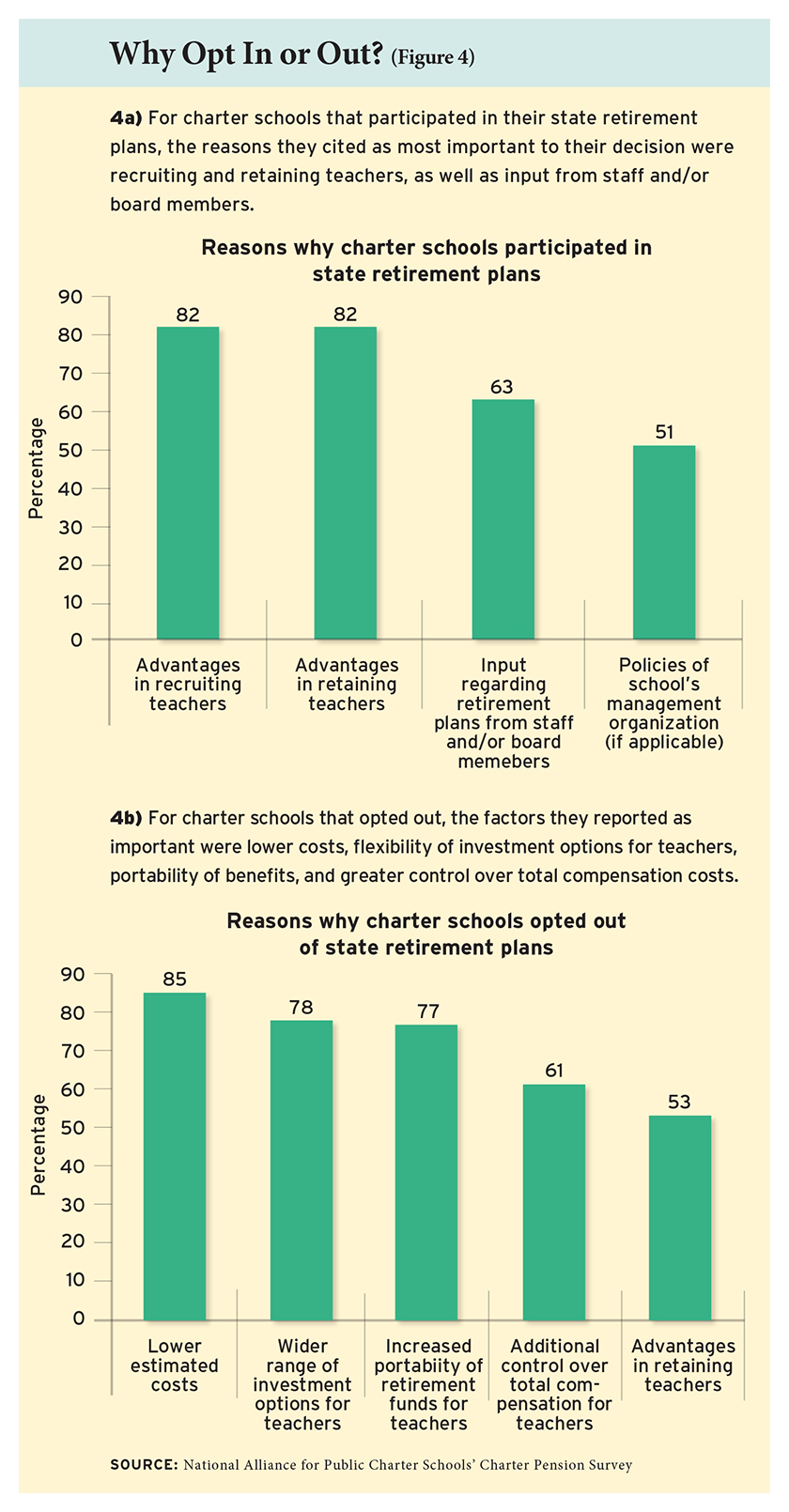Charter schools increasingly choose alternative pension plans when given the choice
New retirement options offer teachers portability and shorter vesting periods
February 1, 2018—With teacher pension plans drowning in $500 billion of debt and burdening school districts with an annual cost that has skyrocketed from $520 per student in 2004 to $1,220 today, the urgency of exploring alternative teacher retirement options is growing. Charter schools, exempt from the requirement to participate in their state pension plan in 19 states, are increasingly taking advantage of the opportunity to innovate. In a new article for Education Next, Michael Podgursky of the University of Missouri-Columbia, with Susan Pendergrass and Kevin Hesla of the National Alliance for Public Charter Schools, studied charter schools in five states that offer flexibility—Arizona, California, Florida, Louisiana, and Michigan—to uncover new management strategies that could be applied to the broader teacher labor market.
Across these five states, the share of charter schools that participate in state pension plans varies widely, from a low of 11 percent in Michigan to a high of 87 percent in California. The vast majority of charter schools opting out of state pension plans instead offer their teachers a portable, defined-contribution plan: 68 percent offer a 401(k) and 25 percent offer a 403(b) plan (a similar, but lower-cost option for tax-exempt organizations). In 61 percent of schools opting out, vesting periods to become eligible for benefits—as long as 10 years in some state pension plans—are one year or less.
Other key findings:
• Fewer new charter schools are opting in to pension plans. Once doors are open and teachers are hired, a school’s in-or-out status in the state pension plan is largely fixed. The researchers find a clear downward trend beginning in 2010, when pension costs began to rise sharply, with charter schools launched in recent years far less likely to participate in their state plan.
• Plan participation varies by charter school type. Middle schools and high schools—where recruiting and retaining teachers is more difficult than in elementary schools—are 21 percent and 91 percent, respectively, more likely to participate in state pension plans. Meanwhile, urban and suburban schools are considerably less likely than rural charter schools to participate in state plans.
• Schools opt in or out based on their perception of incentives. For charter schools that participated in their state retirement plans, the reasons they cited as most important to their decision were recruiting and retaining teachers, as well as input from staff and/or board members. For charter schools that opted out, the factors they reported as important were lower costs, flexibility of investment options for teachers, portability of benefits, and greater control over total compensation costs (see figure).
The researchers administered surveys to a random sample of schools across Arizona, California, Florida, Louisiana, and Michigan, reviewed individual state pension-plan data, and analyzed 2014‒15 and 2015–16 data from the National Alliance for Public Charter Schools, which detailed each charter school’s management type, year opened, grades served, and more, collected from state education departments and the U.S. Department of Education’s Common Core of Data.
To receive an embargoed copy of “Pensions under Pressure: Charter innovation in teacher retirement benefits” or to speak with the authors, please contact Jackie Kerstetter at jackie.kerstetter@educationnext.org. The article will be available Tuesday, February 6 on www.educationnext.org and will appear in the Spring 2018 issue of Education Next, available in print on February 28, 2018.
About the Authors: Michael Podgursky is a professor of economics at the University of Missouri–Columbia. Susan Aud Pendergrass is the vice president of research and evaluation at the National Alliance for Public Charter Schools. Kevin Hesla is the director of research and evaluation at the National Alliance.
About Education Next: Education Next is a scholarly journal committed to careful examination of evidence relating to school reform, published by the Education Next Institute and the Harvard Program on Education Policy and Governance at the Harvard Kennedy School. For more information, please visit www.educationnext.org.



